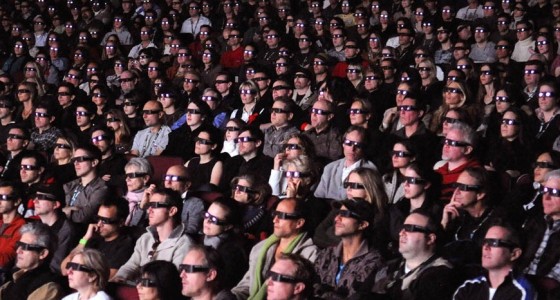Just a couple weeks ago, I went to see the 3D version of the Superman movie “Man of Steel” with one of my adult sons. About a half-hour into the movie, I got up and went to the concession stand for popcorn.
Within a few minutes I returned to the darkened theater, donned my 3-D glasses and proceeded up the stairs to my seat. I knew I had been seated on the end of the row right next to the isle at about mid-way up. My son was seated next to me but with an empty seat between us.
I found my seat while also keeping an eye on the movie. I offered some popcorn to my son by extending the bag to him. He waved it off. I offered it again. “Go ahead, have some,” I whispered. He waved it off again. “That’s weird,” I thought. “He never passes on popcorn.” Then I noticed the little kid on his right. My son doesn’t have any kids.
Suddenly, I heard someone whisper “Dad! Dad!” from behind me. I turned and took off my 3D glasses and saw my son. He was sitting two rows back and laughing. Then I looked over at where I thought my son was seated and saw a man and his young kids looking at me like I was crazy. Yep — I was sitting in the wrong seat and trying to share my bag of popcorn with a complete stranger!
Your View May Be Wrong Also
Looking back, it’s no surprise I ended up in the wrong seat, considering the dark theater and 3D glasses. But most people don’t realize the true location of their company either. Distorted, incomplete information and blurry vision makes you think you’re in one place — when you’re actually in another position altogether.
If you really want to know where you are and where you’re heading, you should consider conducting some RESEARCH.
Let’s look at some of the most common kinds and how they benefit you:
Primary Research/Market Information. This is existing information from institutes, the government, private associations and even some you find on the web services. It is usually relevant information about your market, your competitors and how much business they do, and the size and demographics of your target market.
Surveys. Surveys are a common form of active research. You may find they’re easier to conduct online. Determining which questions to ask is key. I want to caution you that asking the wrong questions gives you bad info. Asking the wrong people does the same. Consider asking important prospective respondents if they’ll answer questions on the phone in a short five-minute interview. Phone interviews yield more in-depth and more accurate information.
Focus Groups. Using focus groups, we’ve helped manufacturers improve consumer and industrial products and sell more of them. We’ve also found them helpful for refining branding ideas and developing advertising campaign ideas.
Bad Research Is Worse Than None
A word of caution —any research is not better than no research. Poorly conducted research can lead you in the wrong direction.
You should consider using a professional. That sounds self-serving because that’s what we do. But after conducting market research for over 20 years, I can tell you that you want your information accurate and from the right source — and you want someone who is able to tabulate and analyze it. You also want professional recommendations based on that analysis. That only comes from pros.
Research is the one marketing tool that can really get you going in the right direction and save you from wasting a lot of time and money. You’ll see clearly where you are, instead ending up in the wrong place — like I did at the movies.













Comment